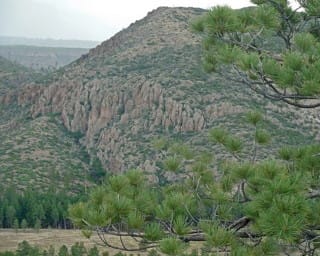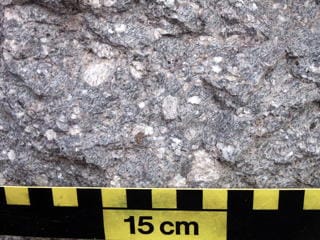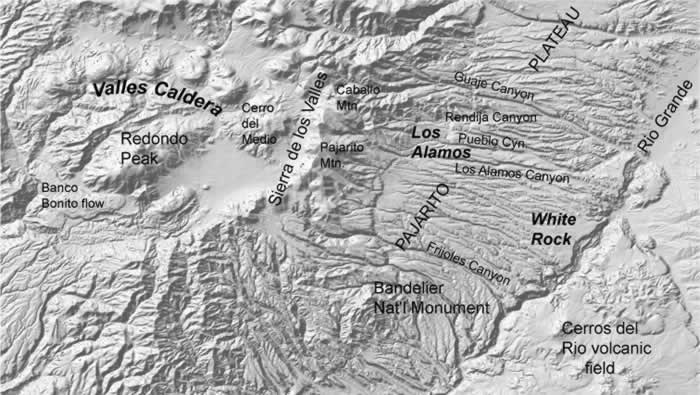This guide displays two informative images of our area, and details about 10 of our major rock formations. The selector box below will find rock formations by name.
Most of the rocks that make up the Pajarito Plateau are volcanic rocks, which are the products of volcanic eruption. The volcanic rocks lie on top of sedimentary rocks, rocks that are eroded from older pre-existing rocks, transported by water, wind, or ice, and then deposited. The sedimentary rocks are important aquifers for the communities of Los Alamos and White Rock. The rocks on the Pajarito Plateau, from youngest to oldest, are below.
Additional details about our local geology are available in a 3-part series of articles:
The Pajarito Plateau Part 1 – Setting the Stage Daily Post, Jan 2014
The Pajarito Plateau Part 2 – Its Creation Daily Post, Feb 2014
The Pajarito Plateau Part 3 – When White Rock Was a Lake Daily Post, Apr 2014
Subject Area Experts (all guides)
Steve Cary (butterflies)
Beth Cortright (insects)
Terry Foxx (invasive plants)
Leslie Hansen (mammals)
Richard Hansen (fish, mammals)
Dorothy Hoard (butterflies, trees)
Chick Keller (flowers, herbarium)
Shari Kelley (geology)
Kirt Kempter (geology)
Garth Tietjen (reptiles)
David Yeamans (birds)
Web Development and Content Management
Pat Bacha
Jennifer Macke
Graham Mark
Akkana Peck
Contact
Please contact us for local nature questions and sightings. We welcome comments, corrections, and additions to our guides.
For more information about local nature, please visit our Nature Blog or subscribe to PEEC This Week.
Rock Formations of the Pajarito Plateau
Make Selection
 Photo: Mary Carol Williams  Photo: Shari Kelley and Kirt Kempter | Tschicoma Dacite and Rhyodacite Lava FlowsAge: 3 million years The mountains that form the skyline of Los Alamos, the Sierra de Los Valles, are made up of lava domes and flows of the Tschicoma Formation. The lavas of the Tschicoma Formation around Los Alamos are typically rhyodacitic to dacitic in composition. Most flows traveled less than 6 miles (10 km) from their source and have steep-sided flow fronts. The flows often exhibit block-and-ash features, where overstepped lava flanks cool and collapse into a pile of rubble during foliage. A beautiful example of a block-and-ash flow can be seen in the water gap in Rendija Canyon just to the east of the cemetery in Los Alamos. Three types of Tschicoma Lavas, each coming from a different volcanic center, have been identified near Los Alamos. One center is located on Caballo Mountain to the northwest of Los Alamos. This lava has a streaky appearance, and is lavender to red on weathered surfaces. Phenocrycrysts (well-developed crystals in a fine-grained matrix) of plagioclase, pyroxene, and sparse biotite and hornblende can be seen using a hand lens. Another center is Pajarito Mountain. This lava is light to medium gray to reddish. Phenocrysts of plagioclase, hypersthene, and pyroxene can be seen with a hand lens. The Rendija Lava forms the majority of Sierra de Los Valles; however, the source of these voluminous flows is uncertain. The vent may have been destroyed when the Valles Caldera formed. These lavas are very porphyritic, with phenocrysts of plagioclase, quartz, and trace amounts of biotite, pyroxene, and hornblende. These lavas are massive, with associated block and ash flows. |


